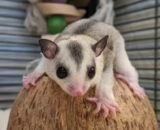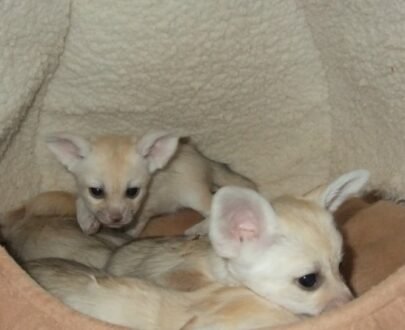- You have no items in your shopping cart
- Subtotal: $0.00
FEMALE HEDGEHOG
$800.00
FEMALE HEDGEHOG

The Spiky Wonder Woman: Unveiling the Female Hedgehog’s Remarkable Characteristics
Female hedgehogs are the epitome of resilience and maternal instinct in the hedgehog world. Their unique characteristics are perfectly adapted for raising young and thriving in the wild. Let’s delve into what makes them so special:
Appearance:
- Spiky Spouses: Females closely resemble males in overall size and appearance. They’re covered in short, brown spines with lighter undersides, sporting a long, pointed snout and tiny legs for maneuvering through undergrowth.
- Subtle Size Differences: In some species, females might be slightly smaller than males, but the key difference isn’t size.
The Telltale Sign:
- No Scent Gland Here: Unlike males, female hedgehogs lack the scent gland located on the underside. Their smooth belly area is a key identifier when differentiating the sexes.
Built for Motherhood:
- Five Sets of Utensils: Perhaps the most fascinating characteristic of female hedgehogs is the presence of five pairs of mammae, or teats, located on their underside. These are essential for nursing their hoglets (baby hedgehogs) after birth.
Social Life:
- Solitary Until Breeding: Similar to males, female hedgehogs are solitary creatures outside of mating season. They have established territories that may overlap with other hedgehogs, but interactions are minimal.
- Nest Architects: When preparing for motherhood, females take on the impressive task of building a safe haven for their young. They gather leaves, twigs, grass, and other soft materials to construct a cozy nest. This nest provides warmth, protection, and a place for the hoglets to grow and develop.
The Power of Motherhood:
- Breeding Throughout the Year (Sometimes): Like males, female hedgehogs have the potential to breed year-round, although breeding is more frequent during specific seasons depending on location and climate.
- Giving Birth: After a gestation period of around 5-6 weeks, females give birth to a litter of 4-7 hoglets. These hoglets are born blind and hairless, relying entirely on their mother for survival.
- Devoted Caregivers: Female hedgehogs are exemplary mothers. They nurse their young, providing essential nutrients for growth. They keep the hoglets warm and safe within the nest, fiercely defending them from potential threats.
- Teaching Independence: As the hoglets grow older, the female hedgehog patiently teaches them essential survival skills like hunting for earthworms, beetles, and other invertebrates that make up their diet. They also learn to avoid predators and navigate their environment. Once the hoglets are weaned and independent, they venture out on their own.
Other Interesting Characteristics:
- Spines for Defense: The spiky coat of the female hedgehog is a natural defense mechanism against predators. When threatened, they curl up into a tight ball, presenting their spines outwards to deter attackers.
- Excellent Sense of Smell: Hedgehogs, both male and female, have a keen sense of smell that they use for various purposes, including finding food, navigating their territory, and potentially even identifying other hedgehogs.
- Nocturnal Hunters: Female hedgehogs are primarily nocturnal creatures. They become most active at night, when their prey (invertebrates) are also active. This nocturnal lifestyle helps them avoid predators active during the day.
By understanding the remarkable characteristics of female hedgehogs, we gain a deeper appreciation for their crucial role in the ecosystem and the importance of conservation efforts to protect these fascinating spiky creatures. baby hedgehog
Categories: Hedgehog, Nocturnal, Small Pets
Tags: african pygmy hedgehog for sale, baby hedgehog, baby hedgehog adoption, baby hedgehog as pets, baby hedgehog breeder near me, baby hedgehog breeders, baby hedgehog for sale, baby hedgehog price, baby sugar glider, bush baby, Bush Baby for sale, Capuchin money for sale, chinchillas, chinchillas for sale, coatimundi, coatimundi for sale, domesticated fox for sale, Dwarf Goats, Dwarf Pig, exotic animals for sale, exotic animals for sale near me, exotic animals for sale online, Exotic pets for sale, exotic pets for sale in texas, exotic pets for sale near me, exotic pets for sale online, Farm Animals, Farm animals For Sale, FEMALE HEDGEHOG, fennec fox, fennec fox for adoption, Fennec Fox For Sale, fennec fox pet, finger monkey for sale, flying squirrels, flying squirrels for sale, fox for sale, Hedgehog For Sale, hedgehog for sale in california, hedgehog for sale in nj, hedgehog for sale in ohio, hedgehog for sale near me, hedgehog pet for sale, hedgehog pet for sale near me, hedgehog price, Hedgehogs, kinkajou for sale, kinkajous, kinkajous for sale, Kune Kune Pig, lemurs, lemurs for sale, Long-eared hedgehog, male and female hedgehogs, marmoset monkey for sale, Marmosets For Sale, Marsupial, Mini Zebu, Monkeys for sale, Nigerian Dwarf Goats, overview of hedgehogs, pet monkey for sale, pet squirrel for sale, piglets, piglets for sale, prairie Dogs, prairie Dogs for sale, Primate, Pygmy Goats, pygmy marmoset for sale. marmoset, red fox for sale, red kangaroos, Red kangaroos for sale, Rodents, Ruffed Lemur, sex a hedgehog, small animals for sale, small exotic pets for sale, Small Pets, small pets for sale, small pets for sale near me, squirrel for sale, sugar glider breeders, sugar glider breeders near me, sugar glider for sale, Sugar Gliders, Zoological








Customer reviews
Reviews
There are no reviews yet.
Write a customer review